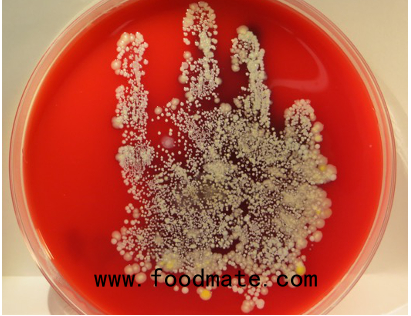What could be more frightening than an unseen enemy — one so stealthy and powerful that it can send you to the hospital or even kill you?
And what if that enemy is so small that you can’t see it, don’t even know that it’s there. Maybe right there on some food you’re about to eat or even on your hands?
bacteria hand shakeAnd what if someone showed you what “the enemy” looked like by enlarging its image. And from there, showed you an enlarged photo of some of the bacteria on food or on common objects such as faucet handles, door knobs, or counter tops? Would seeing them make you want to be extremely careful about protecting yourself and others from the enemy? Would this work better than a scientist telling you their names and warning of the harm they can do.
Turns out that the first option has legs, according to a handwashing study done by a Henry Ford Health System team in a Detroit hospital. The study revealed that health-care workers in the hospital increased their hand washing by at least 11 percent — in one unit by nearly 50 percent — after seeing images showing bacterial growth on items like unused gloves, doorknobs, a nurse station mouse, health-care workers’ hands, a mobile phone and an ultrasound machine.
That’s especially good news because according to U.S Centers for Disease Control and Prevention, health-care providers, in general, practice hand hygiene (proper hand washing) less than half as much as they should. That’s important because proper handwashing helps reduce the spread of infections, which, in the case of food safety, would include infections from foodborne pathogens such as E. coli, Salmonella, Listeria and Campylobacter.
The CDC estimates that there are more than 700,000 healthcare-associated infections in U.S. acute-car hospitals every year.
In the Detroit hospital study, the team members found that showing hospital staff members images of millions of bacteria found on common surfaces was a good way to improve handwashing rates by triggering a feeling of disgust on the part of those who saw the images.
As part of the study, the team developed a book of images containing bacterial cultures of different types of bacteria and different levels of contamination.
Ashley Gregory, an infection prevention specialist who co-led the project, said that hospital staff wanted to wash their hands after looking at the book and picturing similar contamination on their own skin. In addition, the images also helped motivate them to clean various items such as mobile work stations and computer mouse devices in their workspaces.
Looking ahead, Gregory said she is hoping that other institutions will improve handwashing compliance by using this approach.
The study in the Detroit hospital was inspired by a 2014 study of handwashing in 14 Indian villages. In that study, the researchers randomly assigned 14 small villages with populations between 700 and 2,000 to either receive an emotion-driven approach to handwashing or no intervention at all.
This handprint from a healthcare worker shows how much bacteria can be hiding in plain sight.
An article in The Advisory Board, asks the question “How can you make people wash their hands?” “Gross them out,” was the answer. When the study began, handwashing rates were very low — between 1 and 2 percent — in both the intervention and control groups.
Study author Val Curtis of the London School of Hygiene & Tropical Medicine, said that although handwashing with soap could prevent at least one-third of the 800,000 deaths of children under five annually from diarrhea — which is often triggered by a virus or bacteria — handwashing with soap could prevent at least one-third of these deaths. Not surprisingly, surveys reveal that handwashing is infrequent in countries such as India that don’t have running water in many areas.
That’s why researchers from the United Kingdom and St. John’s Research Institute, along with the Bangalore communications firm, Centre of Gravity, came up with a “Super Mum” campaign, which included “emotional drivers” such as the feeling of disgust at the bacteria that can be on a person’s hands. The campaign also factored in other emotional drivers such as a mother’s desire for a happy, thriving child and the yearning on the part of mothers to fit in with what they believe others in the community are doing.
The intervention group had access to an online global toolkit that targeted these emotional drivers. In addition, the group had the benefit of attending community and school-based events that included skits and animated films, along with public pledging ceremonies asking women to promise that they and their children would wash their hands at key times.
An analysis of the study, which was published in The Lancet Global Health, showed these results:
- After 6 weeks, hand-washing compliance in the intervention group was 19 percent, compared with 4 percent in the control group, which received no interventions;
- After 6 months, compliance in the intervention group had risen to 37 percent, compared to 6 percent in the control group; and
- One year later, after the control group had received a shortened campaign, hand-washing in both groups was 29 percent.
Co-author of the study Katie Greenland said the campaign was effective because “it engages people at a strong emotional level, not just an intellectual level.”






